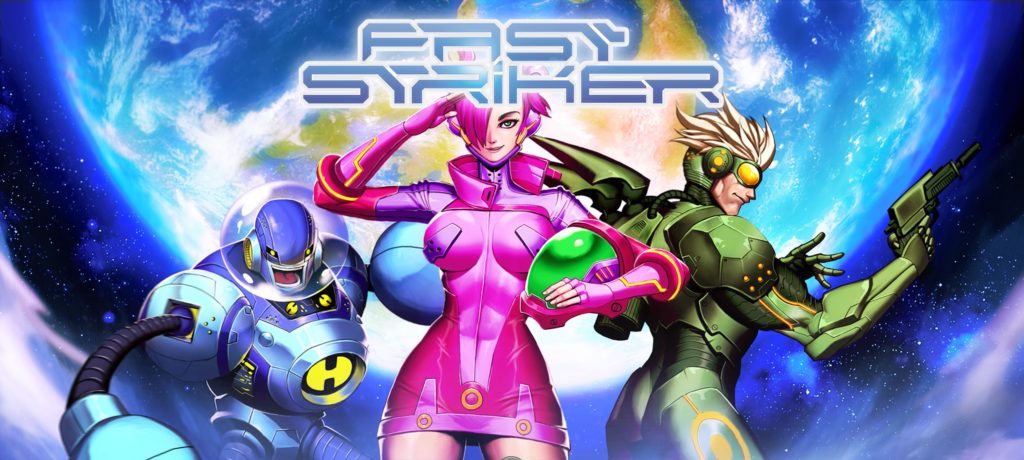
Fast Striker is an pleasant surprise. For those of you unacquainted with NG:DEV TEAM, they’re a German game developer founded in 2001 that only makes arcade style games, primarily shmups and 90s platformers. They’re well-known for games such as Last Hope and Gun Lord, and they released a game called Fast Striker wayyyyy back in 2010. Yup, we’re looking at a fresh release of an eight year old game here. That’s not necessarily a bad thing, however. Fast Striker is a pure game, straightforward, easy to play, and geared towards a variety of audiences.
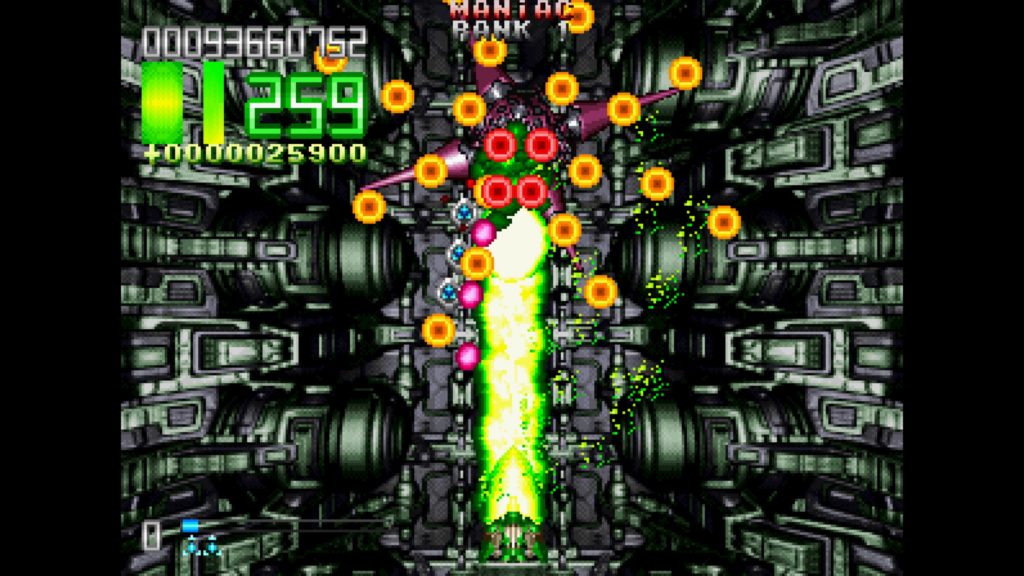
NG:DEV put out some really rough games before Fast Striker. Last Hope is notably unpopular with the shmup community and several of their other releases have fallen flat. That doesn’t stop people from buying them however. Fast Striker itself is available on arcade cart for the Neo Geo MVS, for the Neo Geo AES home system, for the Dreamcast, on iOS, and now for the PS4 as well. NG:DEV tends to produce a love it or hate it style of gaming, primarily geared towards the vintage pixel graphics gamer set, and they make them pretty widely available. But what IS Fast Striker?
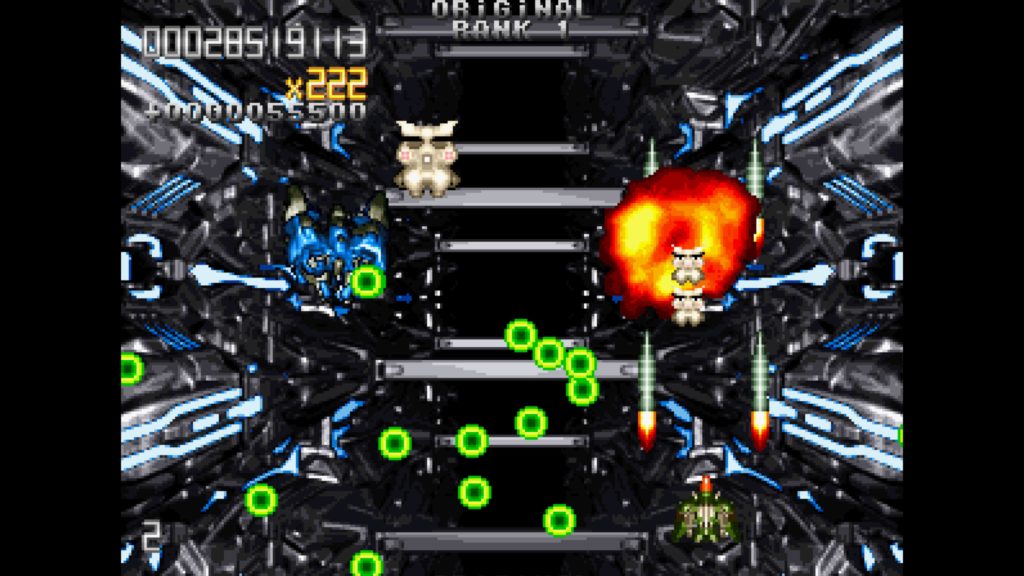
First off, Fast Striker is a very simple vertical shmup. You have guns that fire in a forward spread, rear guns, and limited use invincibility. In addition, if you hold the main fire button down, you have a focused laser that does more damage than hitting the fire button repeatedly (and also is easier on your wrists and hands). There are no special weapons, no upgrades, what you see is what you get. Usually, that’s a disappointing design, but the modes in Fast Striker vary just the right amount, leaving no need for fancy lasers and other upgrades.
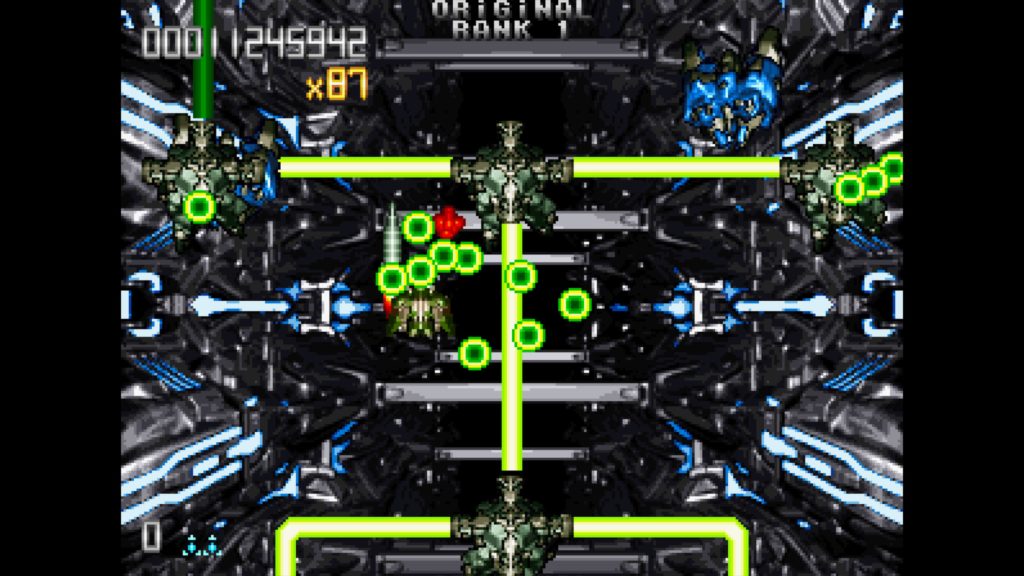
Just like Raiden and other vertical shmups, you’re moving up the screen at a constant rate. The graphic design is decent for 2010, but it is pixilated and obviously not designed for an HD display. Fortunately, the programmers thought of this and thoughtfully included a software-based scanline generator in the options menu, making the game look significantly more like it was originally designed to. It’s always nice to have graphics options, and this one is certainly handy. Enemies aren’t overwhelming, and in the lower difficulty modes, bullets don’t spam the screen too heavily in most cases, so you’ll be looking at more of a memorization and finesse style of gameplay rather than baiting enemies and cancelling their bullet swarms as in a Cave-style shmup. The mechanics seem simple at first, but at each level of difficulty (Novice, Original, Maniac, and Omake) new mechanics are added as well as the difficulty being increased and the bullet patterns intensifying. I did stumble across a good explanation of the actual mechanics of scoring while looking into the background of this game, and it turned out to be extremely helpful in raising my scores. If you need a serious breakdown of how each mode functions, just check out this blog post from 2011 which also happens to mention one of my favorite doujins, Crimzon Clover.
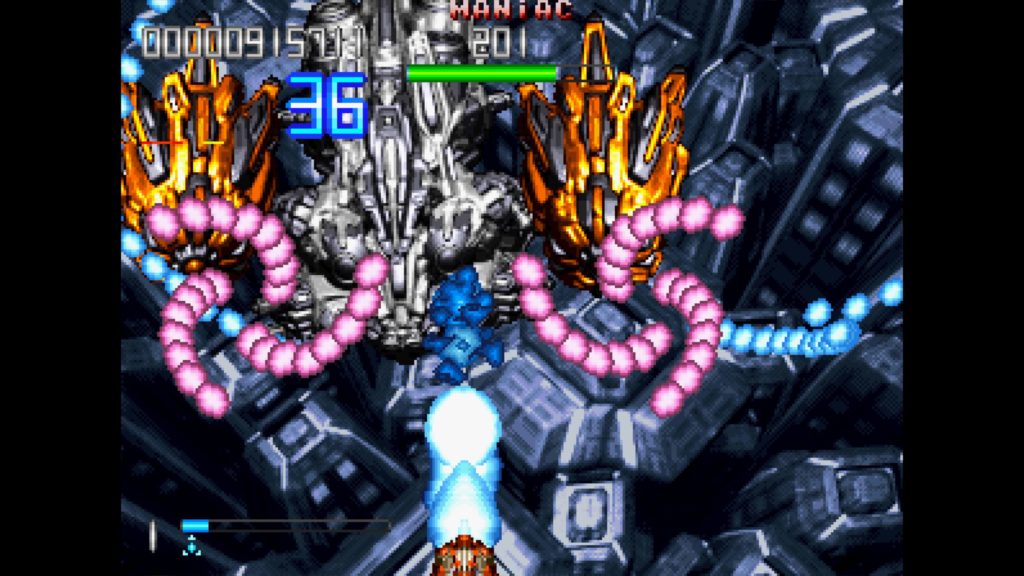
Now that you have a basic idea of how the game works, it’s not a complicated shmup. In Novice and Original mode, the average gamer should be able to make it to Level 2 or 3 within the first few tries. You’re not likely to 1CC the game anytime soon, but it’s definitely playable and friendly to most gamers. Kill everything. Dodge bullets. Pretty simple stuff. The meat of the game is in the clean and responsive controls however. Fast Striker is a very forgiving shmup. Having played games like Mushihimesama and Armed Police Batrider pretty heavily, I’m used to being brutalized on steep learning curves with complex scoring systems and Fast Striker just isn’t that rough. The hit box is tiny, the bullets are slow, the bullet patterns aren’t particularly dense, the tech bonuses and jokers are fairly easy to trigger, and scoring is pretty easy to learn. It’s just a fun game. The end goal for most shmup players is to play for score and maybe, just maybe 1CC the game. If you can beat a game like this on a single credit, you’re just good. Pure and simple. With Fast Striker, that goal is in reach. With the few days I spent on it, I was managing to make it most of the way through the game on a single credit, at least on Original mode. Maniac and *shiver* Omake modes were another story though. Those are definitely above my pay grade.
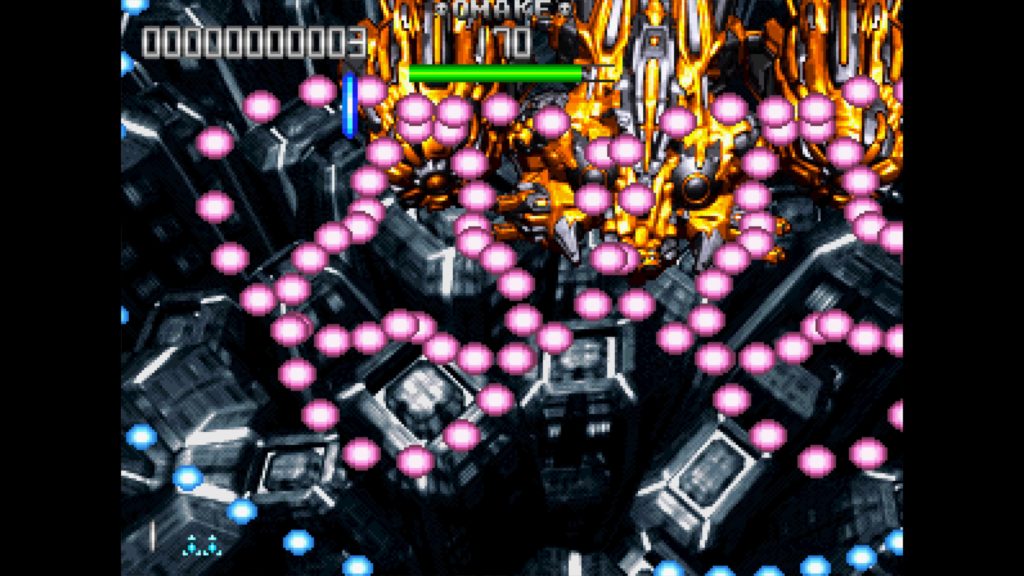
Bosses are solid in Fast Striker too. They’re large, but not too fast. Most bosses only seem to have two to three major patterns and they’re fairly standardized, but at the same time, if you let your guard down, you will most definitely die. With a bit of practice however, you’ll be clearing stages like a pro, as the learning curve is simply more forgiving than the average shmup. Expect huge robot bosses with odd whirlygigs and multi-phase forms. Honestly, that’s pretty standard for the genre. In terms of design, Fast Striker certainly doesn’t stand out. It is a very generic looking space shmup with little in terms of unique design elements, but it manages to get the job done passably well. It’s obvious that the designers are fans of Toaplan, as the ship and minor enemy designs are practically ripped from Toaplan’s mold.
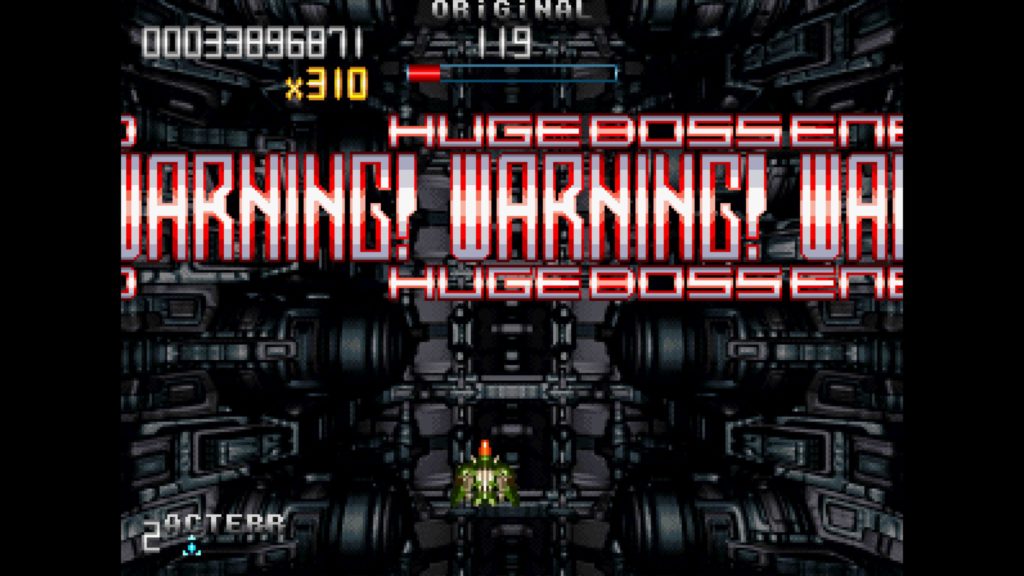
Ultimately, you’re getting a solid game with Fast Striker, especially for only a measly $7 on the US Playstation Store. It’s playable, it’s fun, the graphics are crisp and very reminiscent of late-release Neo Geo titles, the controls are responsive, and the game is a bit more forgiving than some of the more complex shmups out there. It’s not a Cave or a Toaplan title, but it’s definitely not bad for a small Western indie game. Fast Striker is one of the best offerings that has ever come out of the NG:DEV studio, and it’s well worth your money if you’re a fan of vertical shmups. It’s not the best, but it’s definitely not the worst either. Pick it up, have some fun, dodge some bullets, and fight some crazy robot bosses. You’ve earned it.
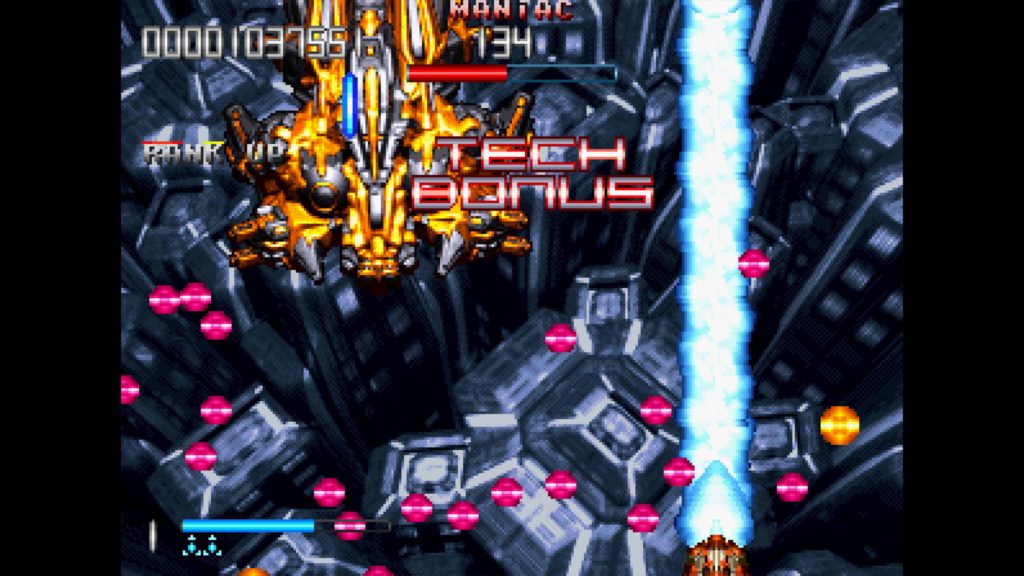
This review was based on a digital copy of Fast Striker played on a PS4 Pro and provided by the developer for review purposes.

